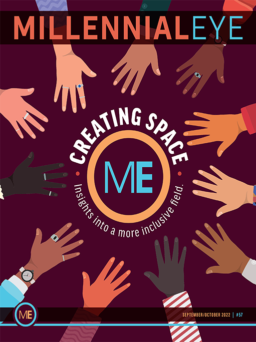Millennials—or Gen Y as they are sometimes called—are the next big market for LASIK. Comprised of people who are now approximately ages 15 to 35, the millennial generation is the largest since the generation that fueled the rise of LASIK in its heyday: the baby boomers. In our practice, laser vision correction isn’t exactly back to those peak levels, but our volume is steadily growing.
LASIK doesn’t have the advantage of newness anymore, but it is still a highly successful procedure performed with reliable, advanced technology—and it’s just as life-changing as ever. Global data suggest that more than 95% of patients who undergo laser vision correction are satisfied with the outcome, which is among the highest rates of satisfaction for any elective procedure.1 Recently, 85% of physicians who had refractive surgery reported that their quality of vision improved compared with their corrected preoperative vision—something I have personally experienced as well.2 That’s a message that we as a profession probably haven’t done a good enough job of sharing, at least not in a way that is persuasive to this generation.
People really haven’t changed all that much. They are still scared about having surgery on their eyes. They still value their money. They still want to feel confident that the surgeon will take good care of them. What has changed is how they consume information and respond to marketing.
REACHING THE SOCIAL MEDIA GENERATION
According to the Pew Research Center, millennials are less likely than older Americans to watch TV or read a newspaper and are much more likely to tweet, post videos online, and frequent social networking sites.3 Because they value authenticity and transparency, millennials like to receive information in a way that is a little more raw and less polished. That means the slick advertising of the past—featuring perfect-looking models climbing mountains and skydiving—may not resonate with today’s laser vision correction candidates.
Millennials trust their peers. They place a great deal of weight on online reviews, so it’s a smart strategy to Google yourself regularly, read patients’ reviews of their experiences at your practice, and respond appropriately.
Our practice hasn’t perfected our social media strategy by any means, but we know that social media is where today’s LASIK candidates get a lot of their information and inspiration. Our most successful “marketing campaign” recently has been a lip dub video to the song “Best Day of My Life” that we posted on YouTube. The video was a lot of fun to make, and it gave us better exposure than any of our more directed marketing efforts.
Vance Thompson Vision lip dub.
We encourage patients to review us on online, and we provide them with a surgical video they can post on their accounts. We have a robust Facebook page and are working on other social media platforms for our practice. A good social media strategy isn’t necessarily expensive, but it does take time and conscious effort to keep content fresh and fun.
It is definitely challenging for practice decision makers to meet patients where they are in the social media space. Even I, as a relatively young surgeon, am a late Gen Xer who doesn’t feel the need to add a hashtag to every thought. However, anyone who wants to attract a younger generation of LASIK patients must commit to being a little bit of a student of the movement to understand how best to market to millennials.
STRATEGIES FOR SUCCESS
No matter what communication strategies we use, we have made an uncompromising commitment in our practice to do the right thing, to use the best technology, and to provide the best possible patient experience. There is no single procedure or technology that is going to be right for every patient, so we want to ensure that we have the right tools and skill set to suit the patient in front of us. That means we will consider LASIK, PRK, phakic IOLs, refractive lensectomy, and, of course, no surgery at all. We want our patients to know that we’ve invested in many different technologies so that we can match the technology to the patient, not the other way around. For laser vision correction, we treat most myopes using the Visx CustomVue system (Abbott Medical Optics) because it offers a personalized, wavefront-guided treatment, and we treat most hyperopes and higher corrections using the Wavelight EX500 system (Alcon) because it removes less tissue.
We strive to provide a great patient experience by treating patients the way we would like to be treated. That starts with a real (and helpful) human answering the phone in our practice instead of an automated voice asking them to “press 1” to make an appointment. We offer little treats and conveniences like coffee, warm cookies, and free WiFi. Our reception staff makes a seating map of the atrium waiting area so that the technicians can walk right up to the lady in the blue coat seated in area 4b, instead of yelling her name from the doorway.
We try to be very respectful of our patients’ time. We measure wait times internally and have set a wait time goal of less than 8 minutes. We have also empowered employees to give patients a gift card for any reason. If their experience with us hasn’t been awesome, we still apologize for keeping them waiting, but it’s a nice touch to be able to treat them to lunch, too. It has also proven to be a good motivator for all of us to stay on schedule.
CONCLUSION
At the end of the day, Gen Y LASIK patients really can’t make qualified judgments about our surgical skills or the quality of our medical devices. But they do know how they were treated. If they feel welcome, safe, and cared for in our practice, that good feeling will be projected onto everything else—and passed on to their network of friends, too.



